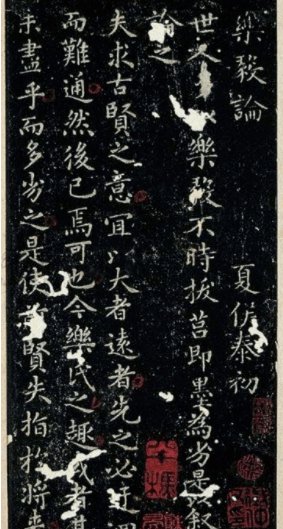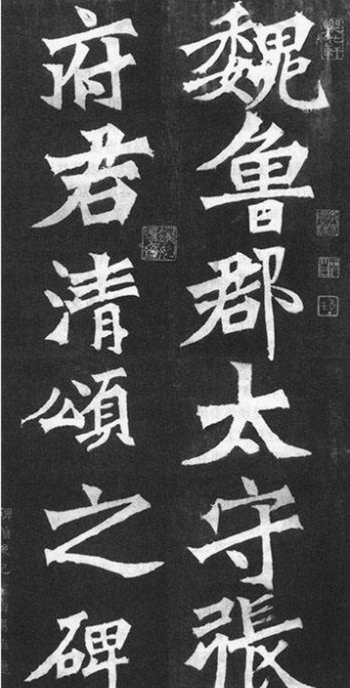Wei Bei is not a transitional script between official script and regular script. Wei Bei is a type of regular script.
Official script - Wei stele - regular script, this view is extremely wrong.The birth of regular script is much earlier than that of Wei Stele.
There is a person in the history of calligraphy that everyone is familiar with, and that is the sage of calligraphy, Wang Xizhi. Wang Xizhi lived in the Eastern Jin Dynasty. He traveled south during the Eastern Jin Dynasty and spread the culture of the Central Plains to Jiangzuo. The calligraphy of Wang Xizhi's family had a profound impact on the south. Regular script during the Wei and Jin Dynasties, mainly small regular script, represented the highest level in the history of Chinese calligraphy.
After the Eastern Jin Dynasty came the Northern and Southern Dynasties, which was a period of great division in Chinese history. There were also great cultural differences between the north and the south. In terms of calligraphy, Wang Xizhi was the main line in the Southern Dynasties. Emperor Wu of Liang Dynasty, Xiao Yan, was the first emperor to admire Wang Xizhi. He collected a large number of calligraphy scripts and ordered the compilation of "Collection of Wang Xizhi's Thousand Character Essays" as a model for practicing calligraphy. Therefore, calligraphy in the Southern Dynasties was based on the calligraphy of Zhong Wang (Zhong Yao and Wang Xizhi). The most famous calligrapher is Wang Xizhi's descendant Wang Sengqian.

In the Northern Dynasties, because there was no Wang Xizhi, calligraphy had a completely different style, and there were relatively many styles. Different from the Southern Tie, most of the characters in the Northern Dynasties were engraved on the stele, and some were even carved directly with a knife without writing. Although some were written first and then carved with a knife, the knife carving did not focus on accurately depicting the ink marks. Instead, it focuses more on reflecting the characteristics of knife carving. The representative of the highest level of calligraphy in the Northern Dynasties is the Wei stele, which is generally more rough, bold, simple and steep than the southern stele. The famous ones include "Zheng Wengong Stele", "Zhang Menglong Stele", "Zhang Xuan's Epitaph" and so on.

Because the calligraphy styles of the south and the north are so different, some systematic calligraphy dictionaries will classify Wei stele and regular script, but this is essentially inaccurate.
The Southern and Northern Dynasties were followed by the Sui and Tang Dynasties, especially the Tang Dynasty, which was a unified dynasty after the Sui Dynasty. It was recognized as one of the most powerful eras in China. Calligraphy also reached another peak after the Wei and Jin Dynasties. The calligraphy of the Tang Dynasty absorbed, mixed, and refined the essence of the Nantiebei stele during the Southern and Northern Dynasties, and strived to innovate on the basis of inheriting and carrying forward Wang Xizhi's calligraphy. Regular script developed in an all-round way, and finally broke through Wang Xizhi's shadow in the hands of Yan Zhenqing.
So the process of calligraphy history is:
Wei and Jin (regular script represented by Zhong Yao and Wang Xizhi) - Southern and Northern Dynasties (the Southern Dynasties succeeded Wang Xizhi, and the Northern Dynasties mainly used Wei stele) - Sui and Tang Dynasties (integrating the north and south to integrate the great achievements)








